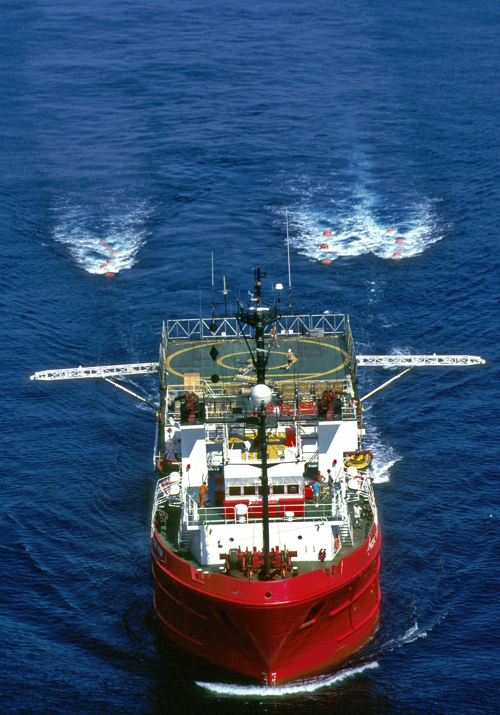
Coatings Technology Blog
Tufram Proves a Sound Investment for Seismic Streamer Manufacturing

When energy companies investigate potential offshore oil fields for drilling, accurate seafloor mapping is critical to their success. While seismic technology is the oil and gas industry’s firmly established geographical exploration method, it can be an expensive proposition. For example, seismic streamers — buoyant cables that are towed behind a ship to probe the ocean floor in order to determine the viability of underwater oil fields — cost millions of dollars and are difficult to repair in hard-to-reach open-water locations.
That’s why the companies that manufacture these cables work hard to protect their investments. Streamer cables are equipped with hydrophones that detect underwater sound waves, as well as the electronics that convert the sonic signals from analog to digital form. One streamer manufacturer houses these electronics inside a rubberized boot, which is formed in a mold made from 6061 AL. The manufacturer recently turned to Magnaplate because the boot mold’s finish, provided by another coating vendor, lacked durability and consequently failed to prevent wear and stick-slip issues.
The company was also dissatisfied with the way in which the mold surface was prepared for coating by that vendor. They were grit blasting the surface to create an anchor pattern with an aluminum oxide media of 80-120 grit. When the coating wore away, the severely damaged mold required extensive repair work before it could be reused.
We coated the aluminum mold with a Tufram® surface treatment. Engineered to protect aluminum and aluminum alloys, Tufram features a low coefficient of friction (COF) and protects against wear mechanisms, galling and abrasion, making it well-suited to solve stick-slip problems. We also engineered the Tufram coating to maintain both the required film thickness, as well as the integrity of the mold.
Tufram also offers these features and benefits:
- Surface hardness between Rc 40 and Rc 65.
- Thickness from 0.0004 to 0.003 inch.
- Resistance to corrosion, acids and alkali chemicals.
Explore Tufram Coatings for Oil and Gas Equipment
The seismic streamer manufacturer is pleased with the quality of the molding used for its rubber boot enclosures. Thanks to these properly molded enclosures, the streamers withstand the stresses of open-water deployment, reliably delivering and recording the data geophysicists use to identify possible drilling locations. Accordingly, the customer has arranged to have the rest of its molds stripped, machined and recoated with Tufram. This successful application is another example of how a Magnaplate surface treatment solved an expensive manufacturing problem and proved a sound investment.
For more information about the Tufram family of surface treatments, visit our product page.